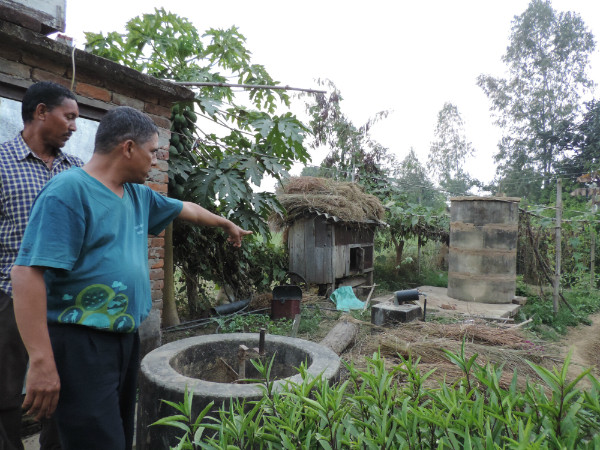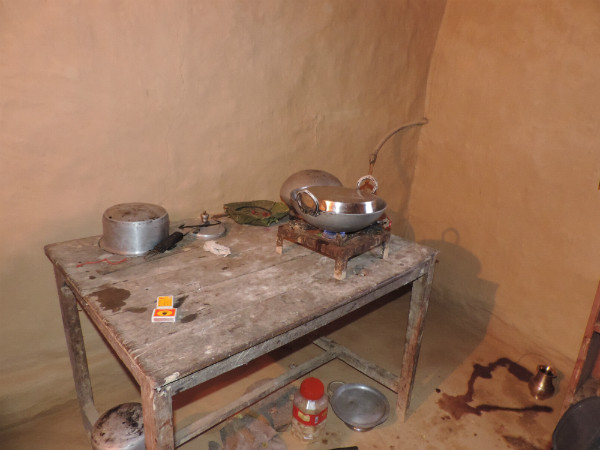Biogas plants: win-win (win-win-win-win)
We had the privilege of visiting several communities while we were in the lowlands of Nepal, and all of them were eager to show us their biogas systems. Biogas plants are relatively simple systems have huge benefits for the families that install them. WWF-Nepal has introduced and helped finance these systems in villages throughout the Terai Arc Landscape, and they’re becoming quite popular.
Prakash Lamsal, project manager for the Terai Arc Landscape Project describes a biogas system. The building behind him is the latrine and the circular structure is where the waste is churned to generate the methane gas. Prakash is pointing at the pipe which takes the gas inside the house.
Before biogas plants, men would spend at least seven hours a day, in the forest chopping wood for fuel. Spending that much time in the forest increases the risk of human-wildlife conflict with tigers and other potentially dangerous wild animals. Back in the home, women would spend at least 6 hours a day cooking, because cooking with wood is very slow. The smoke from the wood will fill the house with smoke and the whole family would be at risk of eye and respiratory diseases. Most families didn’t have access to a toilet, which also increased their risk of disease. Once a family installs a biogas plant, all that changes.
Win: By eliminating the need for fuel wood, households don’t need to cut down so many trees and forest habitat remains intact. In fact, one average sized biogas unit saves approximately 500 tons of firewood per year! That’s a lot of trees! But that’s not all – biogas plants emit less carbon than wood fuel so every year, that same biogas plant reduces carbon emissions by four metric tons of CO2. Since these systems are often found in many houses within a community, that adds up to big savings!
Win: The forests of Nepal are filled with so many amazing species like tigers, rhinos and elephants. These large creatures are simply stunning to be seen from a distance, but when you get up close and personal, it can be a very dangerous situation. By reducing the number of hours spent in the forests, biogas plants help reduce human-wildlife conflict. Humans are safer and species aren’t killed out of self-defense.
Win: Anyone who’s ever spent any time in front of a campfire knows that it’s not very comfortable to get a face full of smoke. And overtime, smoke exposure can have very damaging health effects. Now imagine that you’re spending hours a day in a room filled with wood smoke. The biogas burns much cleaner and significantly reduces incidences of eye and respiratory disease.
Win: Toilets are part of the biogas system, and human waste is also used for fuel! With proper sanitation available, biogas systems help families even further reduce their risk of illness and disease.
Win: With a biogas system, men don’t need to spend hours a day in the forest, and women don’t need to spend hours a day in the kitchen. As a result, there are many more opportunities for education and income generating activities. In fact, many of the families we spoke to had been able to pay back the loans they took to finance the biogas systems within one or two years, due to new enterprises made possible by their biogas system. These benefits are particularly felt by women, who may not have otherwise had the chance to further their education.
Win: The waste used to generate the methane makes a very effective fertilizer after it’s been spent. These biogas systems are helping make the land more fertile.
So it’s not surprising that so many people wanted to show us their biogas system. When something so simple improves lives so much, everyone should know about it!



